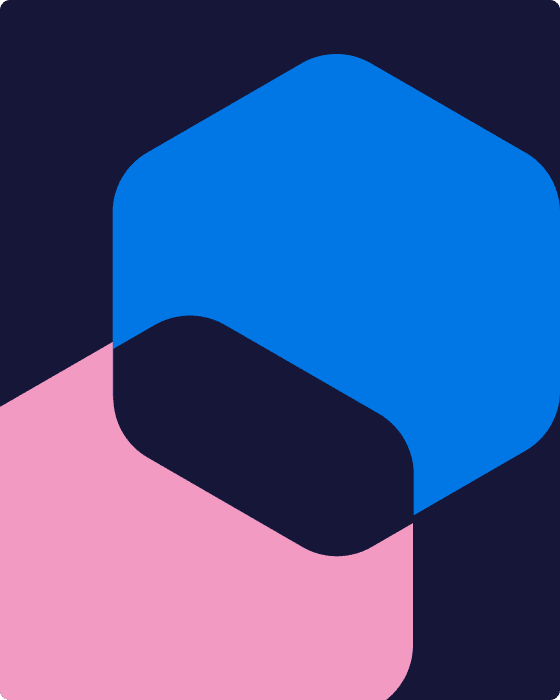Did you ever get all the way to the end of a paper, only to realize that you hadn’t addressed the prompt? Back in the old school days, there wasn’t a worse feeling.
The same goes for building a brand in today’s corporate world. In the beginning of a project, you may have a feel for what you want, only to have the right words escape you. Or, maybe you have the words but are unknowingly misinterpreted by the receiving party, whether a co-founder, colleague or designer. You get started, either out of desperation or naivete, only to get to the end and realize: this isn’t right.
Thankfully, there is good news–this anxiety-ridden process can be avoided if only you change the way you start. Just like re-reading the prompt 2-3 times can save you from getting an F, a mood board can save you from wasting time and money by helping transform your fuzzy idea into a crystal clear one at the start. So instead of panicking, pivot to a visual explanation.
What is a mood board?
A mood board, sometimes referred to as a vision or inspiration board, is a collection of images, words, and objects used to convey a feeling or idea. The phrase is often synonymous with Pinterest, wedding planning and interior design–however, mood boards’ many uses transcend kitchenscapes and events.
A mood board can be used for any company that needs a new look and feel, whether on a large scale or a special project. That means you can use a mood board to:
- Create a new brand
- Add definition to your existing brand
- Create a sub-brand
- And more!
So when you think of a mood board, think of a diving board that helps you jump from the initial idea into a pool of success. If you want to make a splash in the market, a mood board is the best way to start.
Let’s dive into the details!
Why do you need one?
You may be thinking to yourself: I’d rather not waste time and just get started on the project itself. Stop right there! Just like you wouldn’t launch a rocket into space without a mission, neither should you launch a new idea into the world without a plan. Here are just a few reasons why a mood board is beneficial:
Organization
Creative brilliance is often synonymous with messiness–the LIFE photo of Einstein’s desk is a prime example. In business, however, you cannot expect your idea to come to life without some order and instruction. The best idea in the world will be lost if there is not a plan to carry it out.
Building a mood board can help get all of your thoughts into one place, refine them and build a plan to move everything forward. You don’t need to completely Marie Kondo your thoughts to begin, but a good dusting and arranging is certainly in order.
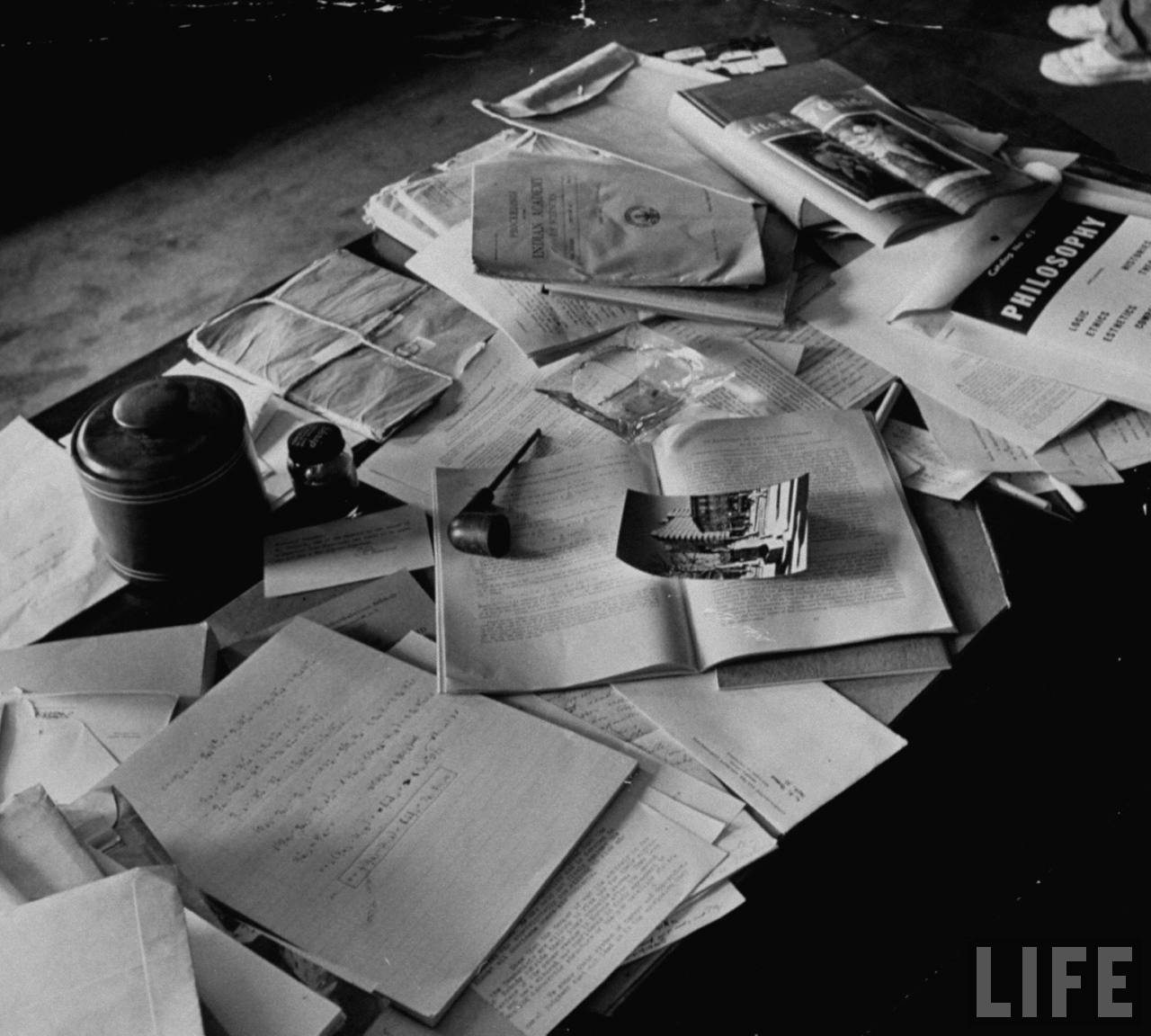
Efficiency
It’s one thing to start a project and stay on track working independently. It’s another thing when you add 10 colleagues, 2 designers, 1 project manager and a myriad of others into the mix–staying laser-focused on your once clear vision quickly becomes easier said than done.
That’s because people can say the same thing but mean different things, or say the same thing but hear different things. Even worse–they can do either while believing that the other person is on the exact same page. A full visual representation, on the other hand, is harder to misconstrue.
Enter: the mood board. Having one not only can get everyone on the same page initially, but be a physical reminder of the goal as you work, informing small decisions throughout the project. That way, you can work cohesively and quickly as a group, referencing the agreed-upon mood board whenever the inevitable question arises.
Investment
Ever uttered the phrase, “I’ll know it when I see it”? While that may be true, you’d be extremely disappointed to get all the way through any project, from a small event to a huge rebrand, only to realize you spent a lot of time and money to fall short (or way off base) of the desired result.
Luckily for you, there are mood boards. A much lower investment than mockups and prototypes in terms of resources, mood boards can convey a lot about the look and feel of the final design. So before you send your ideas to the printers, stop and use a mood board at minimal or low cost to define your direction.
How do I start?
Before collecting resources, know your market and competitors. Look for market standards in color psychology, typography, and overall design. Conduct a competitive audit to see what competitors are doing wrong as well as what they are doing right.
Once you have your thoughts in order, start collecting materials. You can create a digital board using a number of online mediums–if tangibility is more your style, though, you can also kick it old school with a physical board. Magazines, books, textured fabrics, your own photos, color swatches and even print outs can be used to create your masterpiece on a foam board, corkboard or elsewhere. (Disclaimer: These are not always as easy to share with your colleagues or designers as their digital counterparts, but it can still be done–simply take a photo and send it out!)
What do I include?
Throughout the creation process, keep not only the goals of the finished project in mind, but things like brand values and who the target user will be. You can use whichever mediums speak to you and your brand, but here are a few of our ideas:
Colors
Ever noticed that almost every fast food chain has the color red in its logo? McDonald’s, Burger King, Pizza Hut, Domino’s, Sonic, Chick-fil-A, Dairy Queen, In-N-Out and Wendy’s–all red. That’s because red is proven to attract attention and speed up the body’s blood flow–and when the blood flow is increased to the digestive system, it speeds up your metabolism.
Needless to say, color is a powerful communication tool. It can be used to signal action, influence mood, and even influence physiological reactions. This makes it key for marketing your brand–influencing consumers to perceive you in the way you aim to be perceived. After all, consumers make up their minds about products within 90 seconds of their initial interaction, and 62 to 90% of that judgment is based upon color alone. So if you’re peaceful and earthy, might be time to stop seeing red and go green–literally.
If you need help finding the perfect shade, check out Coolors, Design Seeds, Color Hunt or Colormind.
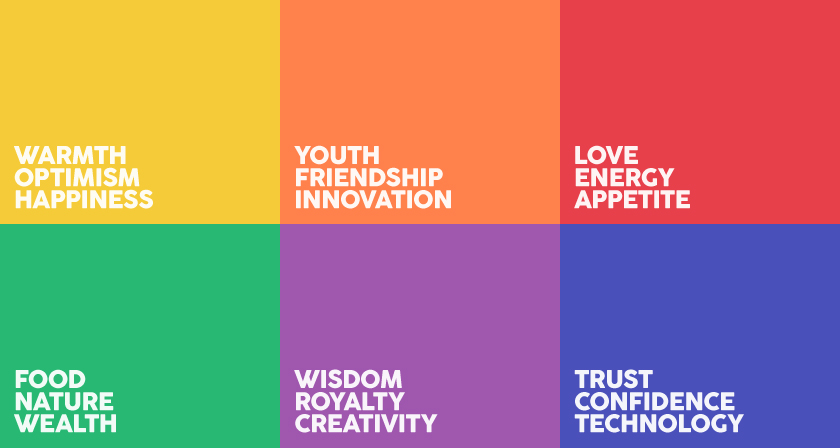
Fonts
A potentially lesser known fact: fonts also evoke emotions. That’s right, all fonts–not just Papyrus. There are literally books written, studies done, and TED talks given on font psychology.
Take serif fonts, for instance. As a classic font, your audience is more likely to believe you are trustworthy and established–a brand to be taken seriously. Sans serif, on the other hand, is modern and clean–more sophisticated and cutting-edge than it’s previous cousin.
If re-branding, choose your font wisely–your logo will be center stage and can make or break your first impression on consumers. If you’re looking for inspiration, check out Typewolf, Google Fonts, DaFont and FontSpace.
Images
They say a picture is worth a thousand words. If you’ve ever been skeptical, check out these facts shared by Shutterstock:
- 50% of our brain (the entire right hemisphere) is dedicated to visual processing
- 90% percent of information transmitted to the brain is visual
- 70% of all our sensory receptors are in our eyes
- 93% of communication is nonverbal
- Our brains can process visuals 60,000 times faster than text and identify images seen for as few as 13 milliseconds
So biologically-speaking, images are important. They tie into our memories and emotions, and marketing with pure emotion performs twice as well as those with pure facts. Moral of the story? Make it visual.
For photos, there are a ton of free and paid resources, including but not limited to: Unsplash, Getty Images, Pexels, Shutterstock and more. For illustrations, check out Behance and Dribbble.
Visual metaphors
If you want to get even more creative with your images, a visual metaphor may be the ticket. Many brands use the visual representation of a person, place, thing or idea that suggests an association or point of similarity to illustrate a key feature. Think a flame to illustrate heat, a tiger to illustrate ferocity (no, not Tiger King), and even a lightbulb or lightning to represent having an idea.
Want to include metaphorical imagery but don’t know where to start? Try this:
- Write out your main idea and/or message in a few words.
- Find words or phrases that are either related or synonymous to your original phrase.
- Collect images that relate to your words.
- Merge those images to tell your story.
Translation: if you want to illustrate how hunger (or “hanger”) can make others afraid to face (or touch) you in the morning, a cactus commuter may just be the way to go.
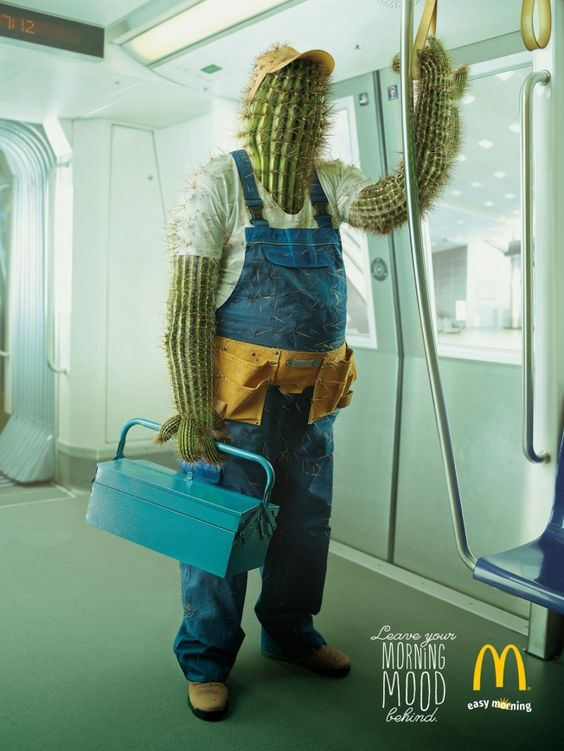
Mood statement
Finally, put the mood into your mood board by defining how a user should feel when looking at or interacting with your brand. You can use a simple sentence structure:
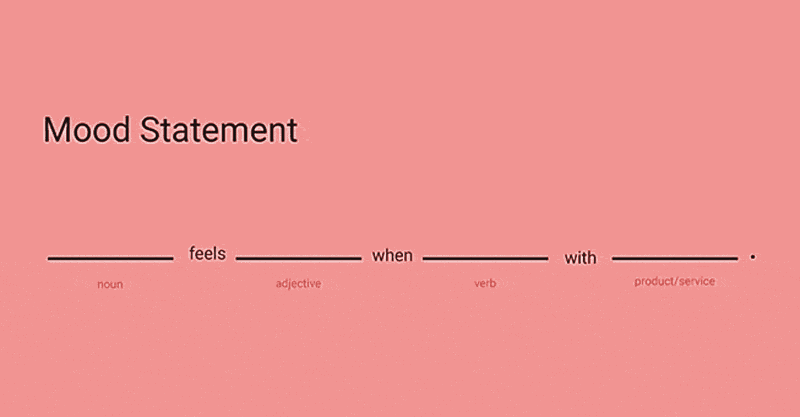
You can also include patterns, shapes, textures, icons and more–if you believe it evokes the desired feeling, it is certainly applicable. Just remember to choose with purpose.
How do I choose?
Consistency is key when making selections for your mood board. While there may be a lot of things out there that you like, not all of them will communicate your brand. So before you put something else on the mood board, listen to Simon Sinek and start with: “why?”
You can then follow this up with other questions, such as: “does this actually represent my brand?” and “will this resonate with my target audience?”
Even if the idea is abstract, the theme should be closely tied to the written goals of your brand and the specific project. Again, just because you love it does not mean it fits your brand idea–if you’re unsure, go back to the beginning and check against your goals, target audience and brand values. If it aligns, add away!
Resources
There are a multitude of resources you can use when building a mood board. If you need inspiration for your board, here are some websites we love:
There are also online platforms where you can create your digital board, including:
But if you’re feeling stuck and want professional help turning your thoughts into a mood board and/or your mood board into a brand, we’re here to help! Contact us here.
